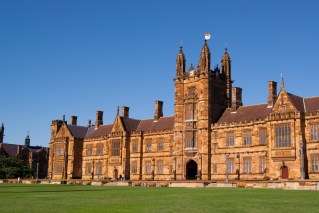What China’s decision to ditch COVID zero means for the world

China is relaxing its COVID zero measures after years of lockdowns and weeks of violent protests.
China’s National Health Commission this week announced the country’s strict COVID rules would be eased – with existing lockdowns lifted in parts of the country.
The decision will align China’s COVID response with most of the world, bringing relief to Chinese citizens – and it should ease the delays and shortages experienced by industries reliant on Chinese goods.
The National Health Commission said the change was due to the current Omicron variant causing less severe illness and fewer deaths than previous strains.
Under China’s new rules, people with mild COVID symptoms can quarantine at home, while testing and health status checks on mobile apps for activities and travelling are no longer required.
Some cities in China are asking residents to remain vigilant, despite the COVID rules being scrapped.
What does this mean for us?
China’s lockdowns throughout 2022 have put immense pressure on the global shipping supply chain.
Lockdowns have closed factories, affected production and put pressure on logistics.
David Leaney, from the ANU College of Business and Economics, told The New Daily earlier this month that global shortages and delays of goods would be alleviated as soon as China’s restrictions eased.
Despite China’s strict COVID restrictions and lockdowns causing supply chain issues, things had already started to improve around the world.
Mr Leaney said when China ceased all lockdowns, prices would go down significantly.
This means cost pressures would gradually improve for Australian consumers as the backlog clears.
It also means Australian businesses relying on Chinese components will again enjoy a greater certainty of supply and fewer disruptions.
What is COVID zero?
China’s COVID zero policy became increasingly controversial over the course of 2022 as other countries decided to drop restrictions and encouraged people to learn to live with the virus.
Last month, frustrated residents protested throughout China.
This public show of discontent is thought to have begun after a number of people died in an apartment fire in the western Xinjiang region, with claims they were trapped in the sealed building due to COVID measures.
Following the protests in China, and around the world in solidarity, some cities began lifting lockdowns.

There was widespread outrage in response to COVID measures in China in November.
Lockdowns in China
The lockdowns in China were unlike those in most other countries.
Wuhan was the epicentre for COVID and the first city to be locked down. Over the next three years, health authorities strove to stifle the virus by introducing localised lockdowns.
In the early days of the pandemic, there were reports of people being barricaded or welded into their homes to keep the virus at bay.
To curb COVID’s spread, 152 Chinese cities have been either partially or fully locked down since March this year. This affected more than 280 million people.
Throughout the pandemic, people living in China were also subject to mass testing and travel restrictions.
Some people went to great measures to escape being locked up due to COVID outbreaks. The Associated Press reported that some migrant workers opted to live on the street, so they could continue to work instead of being locked in their buildings.
There were reports of pandemic workers killing pets, and of elderly people being forced into quarantine facilities, regardless of their medical needs.
What happens now?
China’s health authorities have softened their language around COVID.
In recent announcements, the term “zero-COVID-19” has been omitted, leading to suspicions China’s aspiration to have no COVID in the country are gone, and instead the country will learn to live with the virus.
Residents in Zhengzhou, while still being urged to wear face masks and maintain social distancing, are being told they need to be “the first responsible person for their own health”, similar to messaging in Australia.

People in China are now experiencing a more relaxed approach to tackling COVID.
Domestic travel should be easier with restrictions lifting. China’s state-controlled press has reported domestic ticket sales for tourist and leisure spots have soared.
Socially, things are starting to change: People are posting on social media saying they had tested positive for COVID. Previously, there was a stigma associated with testing positive.
Similarly in Australia, people largely kept their positive results quiet, until lockdowns were lifted and restrictions were a thing of the past.








